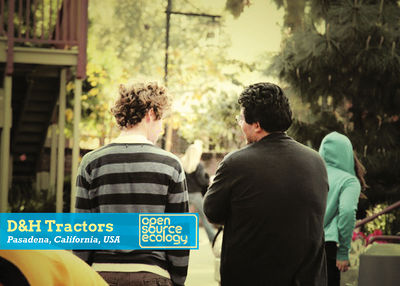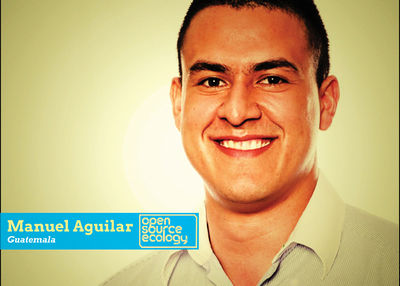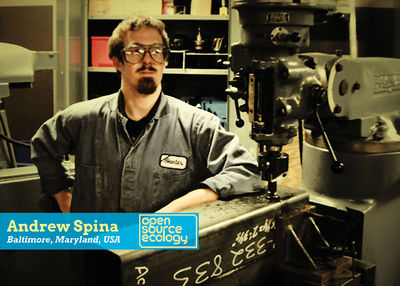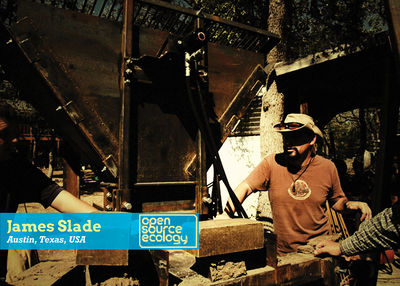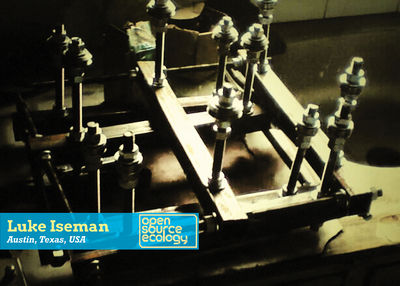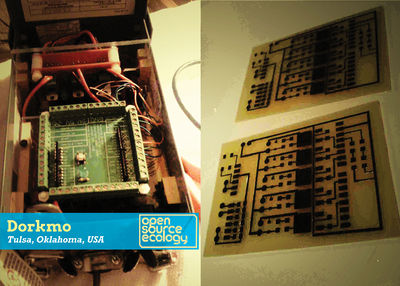Replication: Difference between revisions
No edit summary |
No edit summary |
||
| Line 34: | Line 34: | ||
<div class="floatleft">[[Image:Manuel_Aguilar_-_02.jpg|400px]]</div> | <div class="floatleft">[[Image:Manuel_Aguilar_-_02.jpg|400px]]</div> | ||
Our project, currently in late planning stages, is building a sustainable village for about 30 families recently displaced by extreme weather in Guatemala. The village model will approach sustainability in an integral way, from housing design and construction to agriculture and resource management. Residences, for example, will incorporate appropriate materials (CEB mostly), passive solar design, and come standard with rain-catchment systems with prefiltration, mini greenhouses, efficient wood/methane stoves, water filtration, PV for light/comm, compost toilets, water recycling. Agri and aquaculture will be efficiently designed as well as per local conditions (location TBD soon). The aim will be to demonstrate a working prototype of a self-sustainable community built for the BOP, which can, when designed and built appropriately, economically replace the current minimum denominator settlements which cause so much human and environmental hazard. Ultimately we intend to build something replicable and scalable, which is where OSE comes in. | <p style="text-align:justify;"Our project, currently in late planning stages, is building a sustainable village for about 30 families recently displaced by extreme weather in Guatemala. The village model will approach sustainability in an integral way, from housing design and construction to agriculture and resource management. Residences, for example, will incorporate appropriate materials (CEB mostly), passive solar design, and come standard with rain-catchment systems with prefiltration, mini greenhouses, efficient wood/methane stoves, water filtration, PV for light/comm, compost toilets, water recycling. Agri and aquaculture will be efficiently designed as well as per local conditions (location TBD soon). The aim will be to demonstrate a working prototype of a self-sustainable community built for the BOP, which can, when designed and built appropriately, economically replace the current minimum denominator settlements which cause so much human and environmental hazard. Ultimately we intend to build something replicable and scalable, which is where OSE comes in. | ||
OSE will integrate into our work in a variety of ways. Initially, we aim to train a skilled replicator so that some of the first GVCS machines can be built on site and facilitate village construction and development. We also plan to build and equip a workshop in which to build the initial machines and which will also eventually serve as a high-value business opportunity to some trained villager entrepreneurs. Beyond the machines built for village use, which will generate value at reduced cost - income will be generated initially from fabricating machines for local distribution. Eventually, they workshop will also expand to include training of locals, so that other such businesses may sprout in other communities. This is in keeping with the OSE ethos, and at the core of many intentions of our intentions with our project. The village aims to demonstrate that post-scarcity abundance can be achieved, even with the lowest means found amongst the BoP, with appropriate use of technology. OSE provides a fantastic set of tools and methodologies that potentiate development precisely through intelligent open-source design and tech. | OSE will integrate into our work in a variety of ways. Initially, we aim to train a skilled replicator so that some of the first GVCS machines can be built on site and facilitate village construction and development. We also plan to build and equip a workshop in which to build the initial machines and which will also eventually serve as a high-value business opportunity to some trained villager entrepreneurs. Beyond the machines built for village use, which will generate value at reduced cost - income will be generated initially from fabricating machines for local distribution. Eventually, they workshop will also expand to include training of locals, so that other such businesses may sprout in other communities. This is in keeping with the OSE ethos, and at the core of many intentions of our intentions with our project. The village aims to demonstrate that post-scarcity abundance can be achieved, even with the lowest means found amongst the BoP, with appropriate use of technology. OSE provides a fantastic set of tools and methodologies that potentiate development precisely through intelligent open-source design and tech. | ||
In terms of time frame, in next month, we will have purchased land, identified a replicator, finished first project proposal and begin land work. April I will be travelling abroad for 3 weeks, so construction of the first living Unit will take place mid-May. During summer, June-Aug, we will build the workshop and at some point fabricate the CEB press after having the replicator receive proper training. After this is accomplised, we will build the residential units and have the families begin to move in, as they will also be helping build their own houses. | In terms of time frame, in next month, we will have purchased land, identified a replicator, finished first project proposal and begin land work. April I will be travelling abroad for 3 weeks, so construction of the first living Unit will take place mid-May. During summer, June-Aug, we will build the workshop and at some point fabricate the CEB press after having the replicator receive proper training. After this is accomplised, we will build the residential units and have the families begin to move in, as they will also be helping build their own houses.</p> | ||
== [[Replication-AndrewSpina|Andrew Spina: Baltimore, Md]], USA == | == [[Replication-AndrewSpina|Andrew Spina: Baltimore, Md]], USA == | ||
Revision as of 22:10, 29 February 2012
| Replication Discussions Feel free to discuss your ideas and experiences regarding replication on the GVCS Replication category of our forum. |
Replicators Network Map
- Stage 1 - Planning
- Stage 2 - Fabrication
- Stage 3 - Complete
Replicators Network Surveys
The Replicators Network Surveys are designed to help us learn from independent replicators and move forward in our pursuit of identifying economic best practices. To use a metaphor, each set of documentation and the design idea they represent are like a hypothesis, and independent replications are ways of testing the soundness of our estimates. The surveys, then, help us gather information about the results of the experimentation that takes place across our global network of independent replicators. By participating in this process, you help the Open Source Ecology community learn and fulfill its mission.
Replication Activity
D&H Tractors: Pasadena, California, USA
Manuel Aguilar: Guatemala
<p style="text-align:justify;"Our project, currently in late planning stages, is building a sustainable village for about 30 families recently displaced by extreme weather in Guatemala. The village model will approach sustainability in an integral way, from housing design and construction to agriculture and resource management. Residences, for example, will incorporate appropriate materials (CEB mostly), passive solar design, and come standard with rain-catchment systems with prefiltration, mini greenhouses, efficient wood/methane stoves, water filtration, PV for light/comm, compost toilets, water recycling. Agri and aquaculture will be efficiently designed as well as per local conditions (location TBD soon). The aim will be to demonstrate a working prototype of a self-sustainable community built for the BOP, which can, when designed and built appropriately, economically replace the current minimum denominator settlements which cause so much human and environmental hazard. Ultimately we intend to build something replicable and scalable, which is where OSE comes in.
OSE will integrate into our work in a variety of ways. Initially, we aim to train a skilled replicator so that some of the first GVCS machines can be built on site and facilitate village construction and development. We also plan to build and equip a workshop in which to build the initial machines and which will also eventually serve as a high-value business opportunity to some trained villager entrepreneurs. Beyond the machines built for village use, which will generate value at reduced cost - income will be generated initially from fabricating machines for local distribution. Eventually, they workshop will also expand to include training of locals, so that other such businesses may sprout in other communities. This is in keeping with the OSE ethos, and at the core of many intentions of our intentions with our project. The village aims to demonstrate that post-scarcity abundance can be achieved, even with the lowest means found amongst the BoP, with appropriate use of technology. OSE provides a fantastic set of tools and methodologies that potentiate development precisely through intelligent open-source design and tech.
In terms of time frame, in next month, we will have purchased land, identified a replicator, finished first project proposal and begin land work. April I will be travelling abroad for 3 weeks, so construction of the first living Unit will take place mid-May. During summer, June-Aug, we will build the workshop and at some point fabricate the CEB press after having the replicator receive proper training. After this is accomplised, we will build the residential units and have the families begin to move in, as they will also be helping build their own houses.
Andrew Spina: Baltimore, Md, USA
- Power Cube - In Fabrication (progress)
Creation Flame: Austin, TX, USA
- CEB Press (manual version) - Complete
- LifeTrac - In fabrication
Pondus LLC: Dallas, TX, USA
- Enhanced Power Cube - First_Power_Cube_Sold_by_Tom_Griffing
- LifeTrac - In planning stage
Luke Iseman: Austin, Texas, USA
- CNC Torch Table Prototype I improvements
Dorkmo: Tulsa, Oklahoma, USA
- Detroit Board updates and fabrication
- CEB Controller Box fabrication
For old ideas on Replication, check the Archive.
